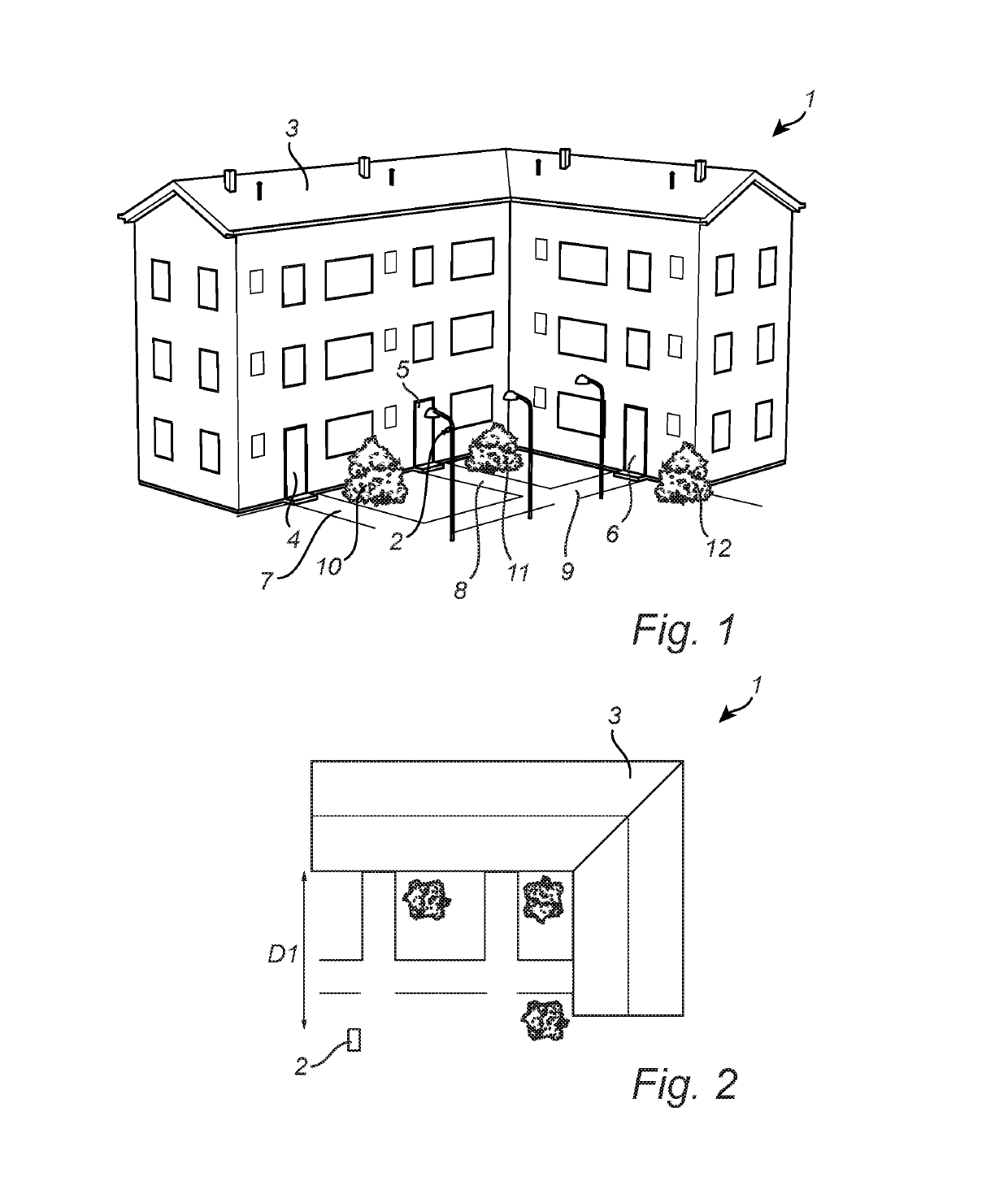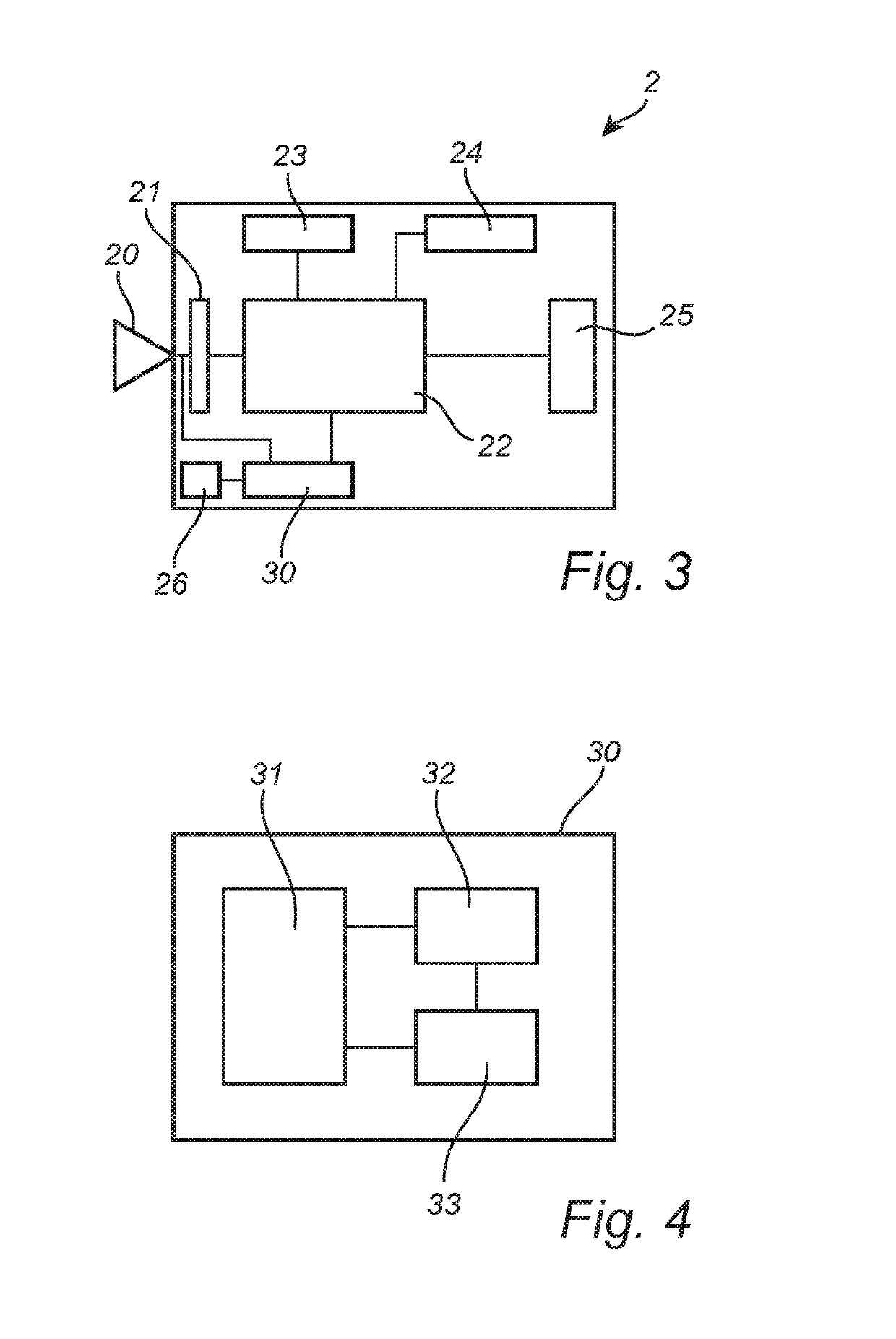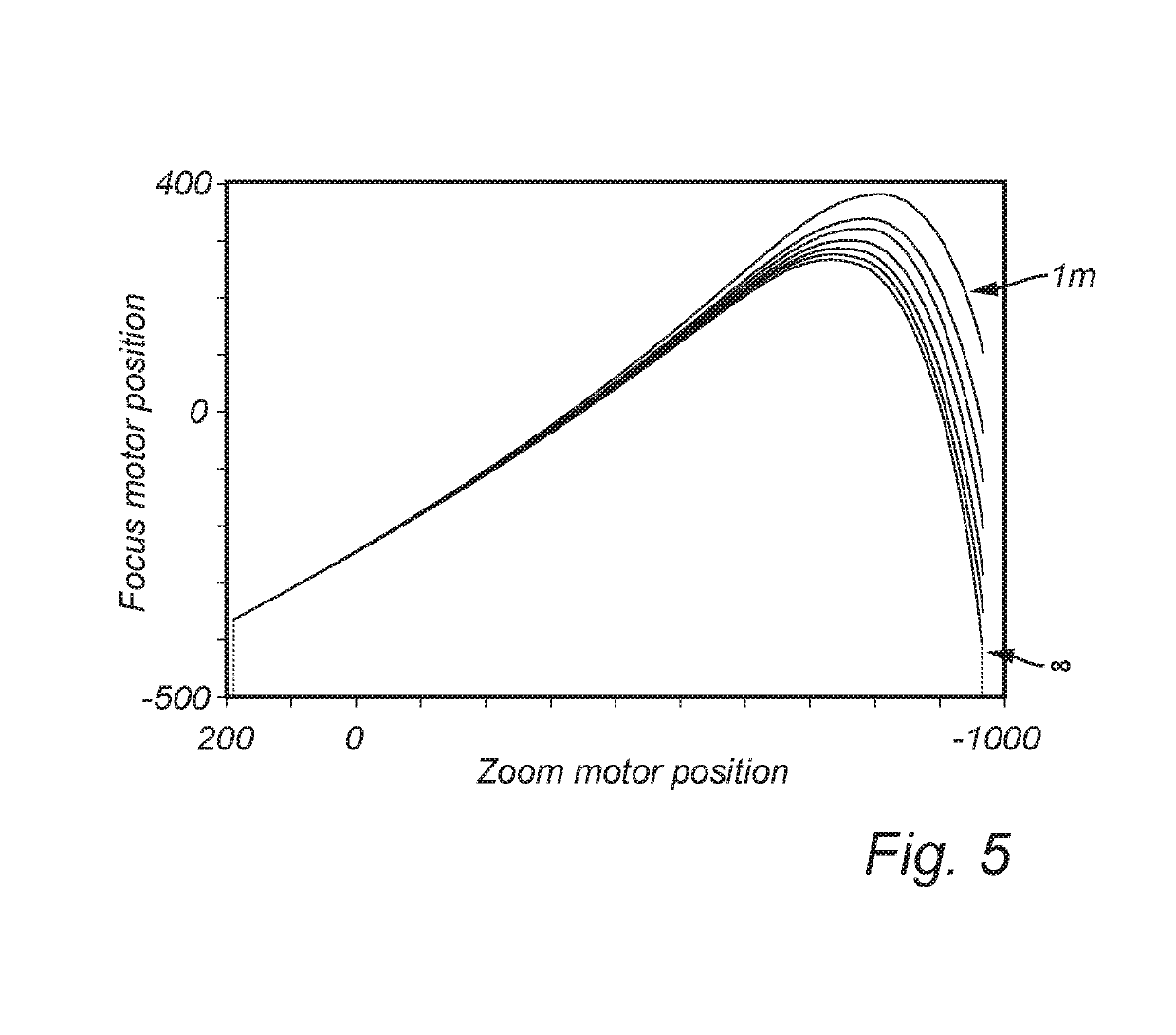Method of performing autofocus, autofocus system, and camera comprising an autofocus module
a technology of autofocus and camera, applied in the direction of camera focusing arrangement, printers, instruments, etc., can solve the problems of inability to find the maximum, keep changing the focus motor position without being able to find, and annoying image wobbling, etc., to achieve better focused images, better focused images, and perform faster
- Summary
- Abstract
- Description
- Claims
- Application Information
AI Technical Summary
Benefits of technology
Problems solved by technology
Method used
Image
Examples
Embodiment Construction
[0036]As seen in FIG. 1, a scene 1 is monitored using a camera 2. The scene 1 is shown from above in FIG. 2.
[0037]In the scene 1, there is building 3 with three doors 4, 5, 6. To each door, there is a respective path 7, 8, 9. Outside the building 3, there are three bushes 10, 11, 12.
[0038]The camera 2 is in this example a PTZ camera, i.e. a camera that is capable of panning, tilting and zooming. The same kind of functionality may be achieved using a camera having a zoom lens and mounting it on a so-called PT head, i.e. a device that pans and tilts an otherwise fixed camera.
[0039]The camera 2 captures images of the scene 1, encodes them and transmits them as a video sequence to, e.g., a control centre, where the video sequence is decoded, such that an operator may watch the video sequence live. The video sequence may also be stored for later review. The camera 2 may also have on-board storage, for instance on an SD card, where video sequences may be stored for later retrieval.
[0040]T...
PUM
 Login to View More
Login to View More Abstract
Description
Claims
Application Information
 Login to View More
Login to View More - R&D
- Intellectual Property
- Life Sciences
- Materials
- Tech Scout
- Unparalleled Data Quality
- Higher Quality Content
- 60% Fewer Hallucinations
Browse by: Latest US Patents, China's latest patents, Technical Efficacy Thesaurus, Application Domain, Technology Topic, Popular Technical Reports.
© 2025 PatSnap. All rights reserved.Legal|Privacy policy|Modern Slavery Act Transparency Statement|Sitemap|About US| Contact US: help@patsnap.com



